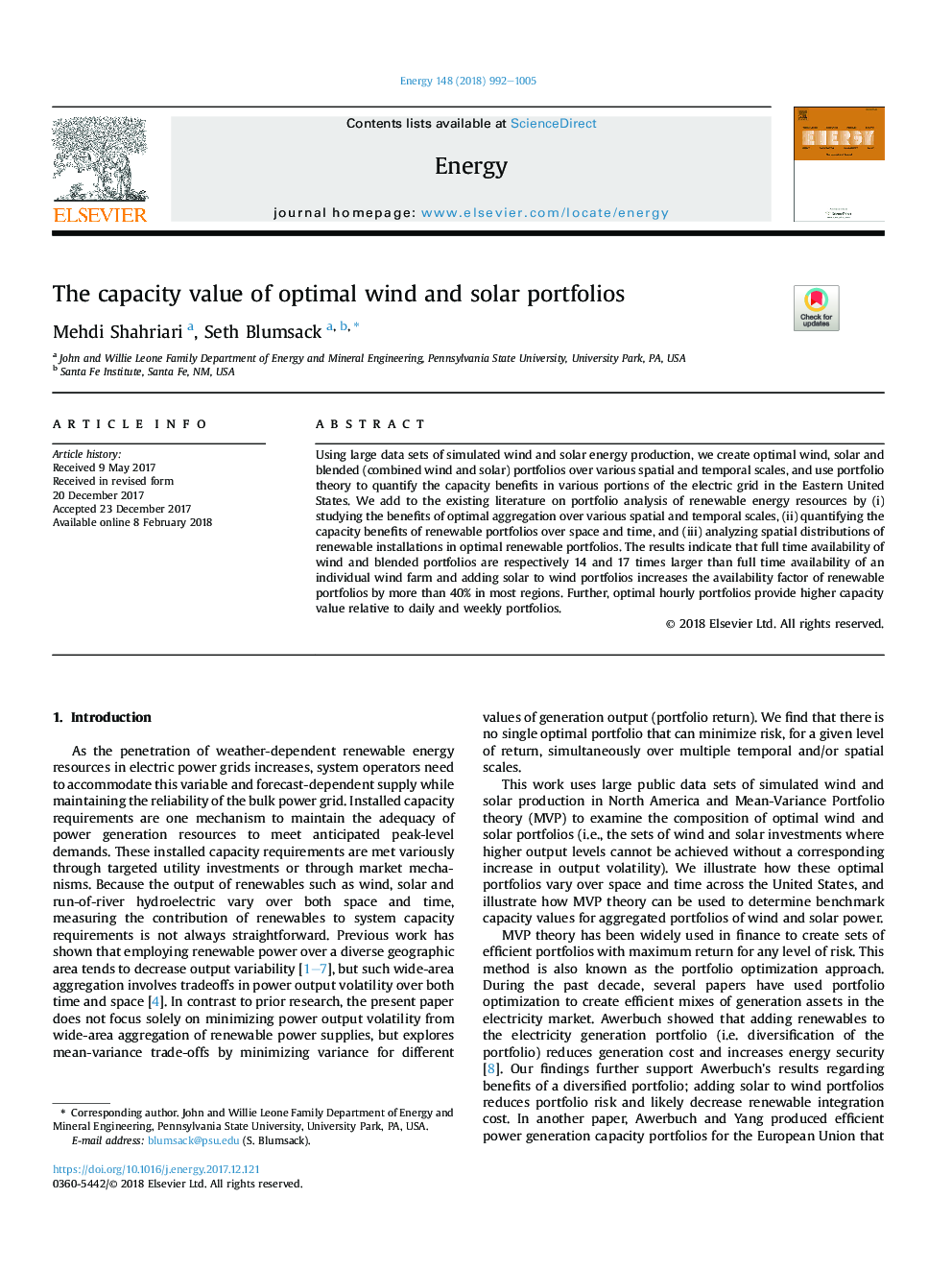| Article ID | Journal | Published Year | Pages | File Type |
|---|---|---|---|---|
| 8072068 | Energy | 2018 | 14 Pages |
Abstract
Using large data sets of simulated wind and solar energy production, we create optimal wind, solar and blended (combined wind and solar) portfolios over various spatial and temporal scales, and use portfolio theory to quantify the capacity benefits in various portions of the electric grid in the Eastern United States. We add to the existing literature on portfolio analysis of renewable energy resources by (i) studying the benefits of optimal aggregation over various spatial and temporal scales, (ii) quantifying the capacity benefits of renewable portfolios over space and time, and (iii) analyzing spatial distributions of renewable installations in optimal renewable portfolios. The results indicate that full time availability of wind and blended portfolios are respectively 14 and 17 times larger than full time availability of an individual wind farm and adding solar to wind portfolios increases the availability factor of renewable portfolios by more than 40% in most regions. Further, optimal hourly portfolios provide higher capacity value relative to daily and weekly portfolios.
Related Topics
Physical Sciences and Engineering
Energy
Energy (General)
Authors
Mehdi Shahriari, Seth Blumsack,
